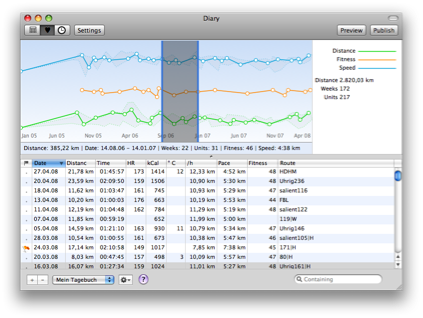TrailRunner 2.1 -- Diary, Trim and iPhone
11.09.09 14:12 Filed in: Features
From my pont of view, TrailRunner 2.1 is done. The new release migrates your diary into a modern database format, fixes several bugs and adds compatibility to Mac OS X 10.6 Snow Leopard. Below the most important changes and extensions:
Diary
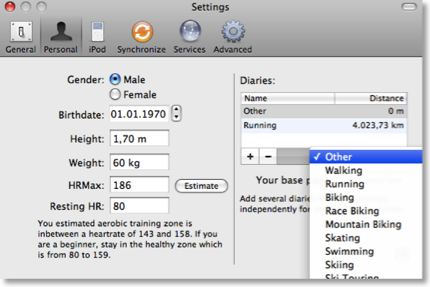 For better performance and for future extensions I rewrote the diary storage. Diaries are now based on a sport kind like running or biking.
For better performance and for future extensions I rewrote the diary storage. Diaries are now based on a sport kind like running or biking.
So in future versions diaries can have different parameters for calculations.
TrailRunner 2.1 will already honor speed units like distance per hour or minutes per distance for sport kinds and also will calculate calories with a different formula.
This migration should solve many startup performance problems and will keep your mac responsive even with very large diaries.
Trimming workouts and Tracks
I do not know why I did not add this earlier but you can now trim workouts to be imported and routes within the map. Trimming means that everything from the edge up to and including the selection will be removed.
The screenshot shows a workout to be imported. You can either select something in the graph and then hit the backspace key or you open the track editor and use the Trim Selection command.
Update: You can now even remove data points in the middle of a track. There’s a new tutorial available explaining all operations available (Tutorials > Import and edit Tracks)
Improved Importers
TrailRunner 2.1 can now import Lap information from LoadMyTracks gpx files. Also GPX files are being loaded much faster due to an asynchronous decoding. Same goes for large tcx files you drag onto the TrailRunner application icon or main window.
The workout importer for non GPS workouts (the one that shows a list of routes below) now also displays a target diary selection menu.
Improved Map Speed
Though I highly recommend to remove any duplicate tracks within your map by following the instructions in the Mastering Track Merge tutorial, performance can be pretty bad with many long tracks on your map. In TrailRunner 2.1 I am testing a new display caching approach and have found results to be very good. Scrolling on my machine went up from 24fps to up to 60fps. But in most cases you should get 2x.
Other Improvements
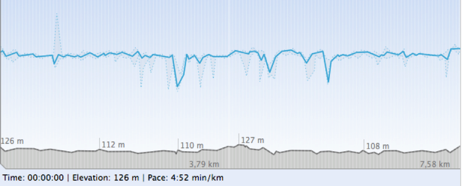 Workout Graph: Added a Preferences option to change the interval resolution for the graph view. (TrailRunner > Preferences > Advanced)
Workout Graph: Added a Preferences option to change the interval resolution for the graph view. (TrailRunner > Preferences > Advanced)
General UI: Added a two finger zoom gesture for modern MacBook trackpads.
Local Route Editor: Added a drag over track to be included rerouting where there was only a drag to way-point rerouting before.
Streets Route Editor: Improved the OSM routing for very long route calculations.
Route Import: Added EveryTrail.com as an import source
Weblog publish: I removed the private and public comment approach as it caused some trouble in the past. When you publish your weblog, all notes will be published.
Export preserves timing: When you export tracks in TrailRunner, the original timing information will be preserved. This makes it posible to read data from your device and then later use an export for geo-tagging.
Route Filtering: The main window search field now filters for routes that contain the given search string in either their name or in the name of any way-point they come across. For example: say a route has a name of biking and goes over a waypoint called ruin, then a search term of ru will find this route. To filter on way-point names only, whith this example just enter wp:ru into the search field. To filter on route-names only, enter rte:ru into the search field.
Before you install TrailRunner 2.1
As TrailRunner uses a new diary store, you should better make a backup of your old.
All data in TrailRunner is being stored within the following folder on your Mac:
< yourhome >/Library/Application Support/TrailRunner/
You old diary was stored in RunLog.xml
When the new version starts up, it will migrate your old diary entries into the new diary. The new file is named ActivityStore.sqlite
A backup of your old diary will be copied to Archive/RunLog;4.xml for if there’s a problem with the migration. You can always move this file back and rename it to RunLog.xml
Please note that even after the migration was done, a much smaller RunLog.xml will stay in place, as it still contains some legacy data. So should you require to migrate back, just delete this file.
Important note: You can not use TrailRunner 2.0 at the same time as TrailRunner 2.1 as after the migration the diary will appear to be be empty on 2.0
Jump on the TrailRunner 2.1 track
TrailRunner 2.1 has its own app-cast so if you download the version below, you will be notified on updates.
> Download TrailRunner 2.1
> Import and Edit Tracks Tutorial
> Mastering Track Merge Tutorial
Please give feedback in case you have any trouble with the migration or other stuff.
Have fun,
- berbie.
Diary

So in future versions diaries can have different parameters for calculations.
TrailRunner 2.1 will already honor speed units like distance per hour or minutes per distance for sport kinds and also will calculate calories with a different formula.
This migration should solve many startup performance problems and will keep your mac responsive even with very large diaries.
Trimming workouts and Tracks
I do not know why I did not add this earlier but you can now trim workouts to be imported and routes within the map. Trimming means that everything from the edge up to and including the selection will be removed.
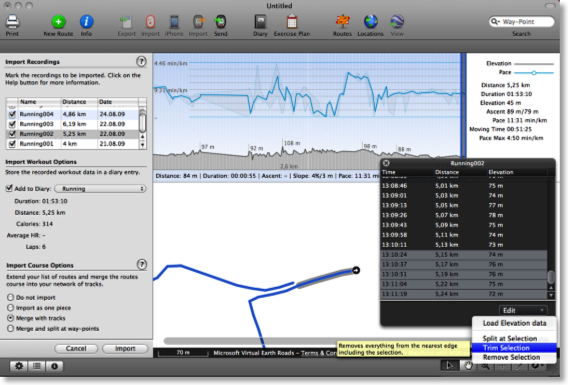
The screenshot shows a workout to be imported. You can either select something in the graph and then hit the backspace key or you open the track editor and use the Trim Selection command.
Update: You can now even remove data points in the middle of a track. There’s a new tutorial available explaining all operations available (Tutorials > Import and edit Tracks)
Improved Importers
TrailRunner 2.1 can now import Lap information from LoadMyTracks gpx files. Also GPX files are being loaded much faster due to an asynchronous decoding. Same goes for large tcx files you drag onto the TrailRunner application icon or main window.
The workout importer for non GPS workouts (the one that shows a list of routes below) now also displays a target diary selection menu.
Improved Map Speed
Though I highly recommend to remove any duplicate tracks within your map by following the instructions in the Mastering Track Merge tutorial, performance can be pretty bad with many long tracks on your map. In TrailRunner 2.1 I am testing a new display caching approach and have found results to be very good. Scrolling on my machine went up from 24fps to up to 60fps. But in most cases you should get 2x.
Other Improvements

General UI: Added a two finger zoom gesture for modern MacBook trackpads.
Local Route Editor: Added a drag over track to be included rerouting where there was only a drag to way-point rerouting before.
Streets Route Editor: Improved the OSM routing for very long route calculations.
Route Import: Added EveryTrail.com as an import source
Weblog publish: I removed the private and public comment approach as it caused some trouble in the past. When you publish your weblog, all notes will be published.
Export preserves timing: When you export tracks in TrailRunner, the original timing information will be preserved. This makes it posible to read data from your device and then later use an export for geo-tagging.
Route Filtering: The main window search field now filters for routes that contain the given search string in either their name or in the name of any way-point they come across. For example: say a route has a name of biking and goes over a waypoint called ruin, then a search term of ru will find this route. To filter on way-point names only, whith this example just enter wp:ru into the search field. To filter on route-names only, enter rte:ru into the search field.
Before you install TrailRunner 2.1
As TrailRunner uses a new diary store, you should better make a backup of your old.
All data in TrailRunner is being stored within the following folder on your Mac:
< yourhome >/Library/Application Support/TrailRunner/
You old diary was stored in RunLog.xml
When the new version starts up, it will migrate your old diary entries into the new diary. The new file is named ActivityStore.sqlite
A backup of your old diary will be copied to Archive/RunLog;4.xml for if there’s a problem with the migration. You can always move this file back and rename it to RunLog.xml
Please note that even after the migration was done, a much smaller RunLog.xml will stay in place, as it still contains some legacy data. So should you require to migrate back, just delete this file.
Important note: You can not use TrailRunner 2.0 at the same time as TrailRunner 2.1 as after the migration the diary will appear to be be empty on 2.0
Jump on the TrailRunner 2.1 track
TrailRunner 2.1 has its own app-cast so if you download the version below, you will be notified on updates.
> Download TrailRunner 2.1
> Import and Edit Tracks Tutorial
> Mastering Track Merge Tutorial
Please give feedback in case you have any trouble with the migration or other stuff.
Have fun,
- berbie.
TrailRunner 1.7 - Released
04.07.08 13:34 Filed in: Features
TrailRunner 1.7 is now out. Please note that TrailRunner 1.7 requires MacOS X 10.5 Leopard to run. If you are still working under 10.4 Tiger, you can use the last 1.6 release. Development for the 1.6 release will be stopped from now on.
What's new in 1.7:
Merge
Rewrote the merge elements algorithm to be more stable, faster and to support more operations to be undoable. It's not complete yet but given the fact that this is extremely complex, I am very happy with what I have learned and was able to dig out as the current core. Also reduced the geographic snap-in grid from 20 meters to 10 meters.
Workout History
I am at rewriting the old overall history diagram. Instead of the once fancy idea of having adaptive time intervals like "Summer 06" I now go the conservative way of weeks. The screenshot below should illustrate what I mean. As you can see the diagram type is identical to the workout analysis graph meaning you have the same analysis features.
New is the deviation background behind the line. As before, TrailRunner displays the statistical median for an interval but now gives you an idea in what value range this median lies within (see the grey background with the dotted outline)
Weblog
The weblog now also publishes a zoomed image along with the thumbnail left to the weblog entry. Click on the thumbnail to see the enlarged version. Find an example in my own weblog.
Nike+ SportBand and nikeplus.com
Originally I had planned to access the new Nike+ SportBand workout data much like I access an iPod. But it turned out to be impossible. But then I learned how easy it was (for me) to access a users complete workout store at nikeplus.com. The consequence? Register at nikeplus. Set goals, run competitions, put yourself into the spotlight and then download your personal data back into TrailRunner—on your Mac. It's your property. Find all this behind the Nike + Apple SportKit toolbar button.
Get the latest changes from the Release Cast
Download the latest TrailRunner 1.7 Release Download
Download the last TrailRunner 1.6 Release Download
What's new in 1.7:
Merge
Rewrote the merge elements algorithm to be more stable, faster and to support more operations to be undoable. It's not complete yet but given the fact that this is extremely complex, I am very happy with what I have learned and was able to dig out as the current core. Also reduced the geographic snap-in grid from 20 meters to 10 meters.
Workout History
I am at rewriting the old overall history diagram. Instead of the once fancy idea of having adaptive time intervals like "Summer 06" I now go the conservative way of weeks. The screenshot below should illustrate what I mean. As you can see the diagram type is identical to the workout analysis graph meaning you have the same analysis features.
New is the deviation background behind the line. As before, TrailRunner displays the statistical median for an interval but now gives you an idea in what value range this median lies within (see the grey background with the dotted outline)
Weblog
The weblog now also publishes a zoomed image along with the thumbnail left to the weblog entry. Click on the thumbnail to see the enlarged version. Find an example in my own weblog.
Nike+ SportBand and nikeplus.com
Originally I had planned to access the new Nike+ SportBand workout data much like I access an iPod. But it turned out to be impossible. But then I learned how easy it was (for me) to access a users complete workout store at nikeplus.com. The consequence? Register at nikeplus. Set goals, run competitions, put yourself into the spotlight and then download your personal data back into TrailRunner—on your Mac. It's your property. Find all this behind the Nike + Apple SportKit toolbar button.
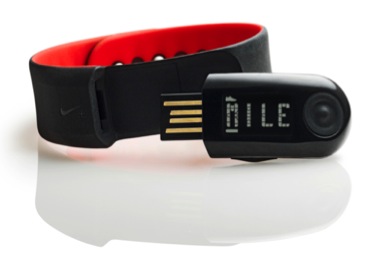
Get the latest changes from the Release Cast
Download the latest TrailRunner 1.7 Release Download
Download the last TrailRunner 1.6 Release Download
